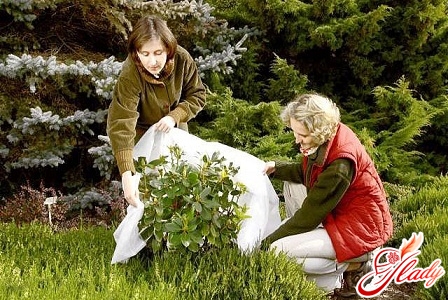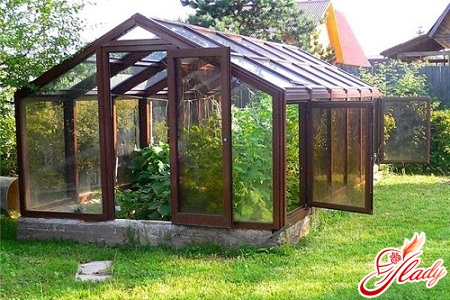 Another gardening season has come to an endend. November has arrived – the month of its final closing. Almost all the trees have already shed their leaves, the songbirds have already flown away, the annoying flies and cheerful butterflies have disappeared (until spring). And only the tireless gardeners cannot calm down. Autumn work in the garden requires no less effort from them than in spring or summer. And at the final stage – even more so. The main goal of garden work in November is to prepare the garden for winter and the new season. How to fulfill this important mission, and what needs to be done for a successful wintering of your garden? The life cycle of garden plants and other garden inhabitants dictates its own conditions to us. A period of rest is coming for the garden, and our task is to successfully prepare it for wintering. Everything that needs to be done can be conditionally divided into preparing the plants themselves, cleaning the garden and work for which the period of rest of garden crops is suitable. November autumn work in the garden looks like this: pruning and replanting fruit trees and shrubs; pruning and propagating flowering perennials and shrubs; planting spring bulbs; covering and insulating wintering plants; collecting fallen leaves and autumn cleaning in the garden. Let's consider all these works in more detail.
Another gardening season has come to an endend. November has arrived – the month of its final closing. Almost all the trees have already shed their leaves, the songbirds have already flown away, the annoying flies and cheerful butterflies have disappeared (until spring). And only the tireless gardeners cannot calm down. Autumn work in the garden requires no less effort from them than in spring or summer. And at the final stage – even more so. The main goal of garden work in November is to prepare the garden for winter and the new season. How to fulfill this important mission, and what needs to be done for a successful wintering of your garden? The life cycle of garden plants and other garden inhabitants dictates its own conditions to us. A period of rest is coming for the garden, and our task is to successfully prepare it for wintering. Everything that needs to be done can be conditionally divided into preparing the plants themselves, cleaning the garden and work for which the period of rest of garden crops is suitable. November autumn work in the garden looks like this: pruning and replanting fruit trees and shrubs; pruning and propagating flowering perennials and shrubs; planting spring bulbs; covering and insulating wintering plants; collecting fallen leaves and autumn cleaning in the garden. Let's consider all these works in more detail.
Pruning of fruit trees and berry bushes
Autumn pruning of these crops affects not onlyfor the future harvest, but also for a successful wintering. In late autumn, sanitary pruning of trees and shrubs is carried out. How to do it correctly? Diseased and dry branches of fruit trees should be cut "to the ring" (remove completely along the outer annual ring at the base of the branch). Cut off all water sprouts (vertical non-fruiting branches). In bushes, it is necessary to remove excess basal shoots and shoots, dried branches. Clean and disinfect cuts (for example, with a solution of copper sulfate). Cover large cuts with garden pitch. Spring grafts of fruit trees grow a lot over the summer. Therefore, in the fall, it is necessary to replace the pegs to which the shoots are tied with higher ones. The tying material that has become tight should also be replaced or loosened. In raspberries and blackberries, it is necessary to cut out all shoots that bore fruit this year. The remaining shoots can be untied from the supports and pinned to the ground. Gooseberry and currant bushes can be hilled up, and young berry bushes can be tied up (to protect them from the weight of the snow cap).
Pruning and reproduction of flower crops
Perennial flowers also need preparation forwinter. The above-ground part of herbaceous perennials should be cut off. Echinacea, phlox, rudbeckia, aconite should be cut to a height of 10-15 cm. Leave “stumps” of 2-3 cm for other flowers. Yarrow, sedum, astilbe and solidago can be left uncut, postponing pruning until spring. It is advisable to add fresh soil to flower beds and under perennials. Before the first frost, it is necessary to plant bulbs of muscari, crocuses, hyacinths, tulips and other spring primroses. But the bulbs and tubers of dahlias and gladioli, on the contrary, need to be dug up. Dahlias can be dug up after the first night frosts. The dug up tubers need to be washed, damaged areas cut out (sprinkled with crushed coal), dried and stored for winter. Clean the gladiolus bulbs, dry them and put them in boxes. In winter, you can also sow cold-resistant annuals: lupine, calendula, sweet tobacco, cosmos and rudbeckia. To sow flowers with small seeds, dig in containers with soil (two-thirds) into the bed. In such containers, the seedlings will not get lost against the background of lush spring greenery.
Shelter and warming of wintering plants
How to protect young seedlings and heat-loving plantscrops from winter frosts? Compact bushes and young seedlings can be completely covered with a special covering material. Remove clematis and climbing roses from the supports, trim the vines a little and, curled into a ring, lay them on the ground. Before covering, it is necessary to trim the flowers and buds of hybrid tea roses. Bushes should be insulated no earlier than when the minus temperature of 8-10 degrees becomes stable. To completely cover the bushes, insulating materials (for example, sawdust) should be poured into a mound, and a special covering or ordinary polyethylene should be laid on top, pressing the edges with stones or bricks. Particularly valuable varieties should be pre-covered with a wooden frame. To insulate the roots of young plants, you can fill the near-trunk circle with compost, sawdust or dry peat. To protect against rodents, the trunks can be wrapped in roofing felt or nylon tights. Trees can be protected from hungry winter hares (if there are any nearby) by tying them with pine branches with the needles facing down. Frosts are not as dangerous for thuja, rhododendron and boxwood as the spring sun, which can burn the plants. They can be protected from frost and sunlight by wrapping them in matting, burlap or other covering materials except polyethylene (these plants can rot under it). To prevent snow from damaging conifers, tie their branches with twine and place frames or supports under them.
Cleaning of the garden
Cleaning the garden is also an important part of it.pre-winter preparation. Before you finally prepare your garden for winter, you must tidy it up. First, tidy up the crowns of trees and bushes. After sanitary pruning, remove overwintering butterfly nests and dried fruits from the branches. Burn it all. Add fallen leaves, stems of cut annuals and other plant waste to the same fire. Such a fire will help prevent plant diseases and destroy pests that have prepared for winter. Dig up the soil around the trunks of trees and berry bushes without breaking up the clods of earth. This will cause the soil to freeze and the pests that overwinter in it will die. For the same purpose (pest control), whitewash the trunks and skeletal branches of fruit trees with lime. Using tree bark or dry leaves, mulch the soil under non-winter-hardy trees and bushes. Clear the lawn of dry leaves, dead grass and moss. Trim it. November is the best time for the last trimming: before the frost sets in, the grass will have time to grow to a sufficient height (6-8 cm). Taller grass may freeze and rot. If the lawn is “bald” in places, then at this time you can add seeds (ants will not drag them away, and in the spring, before the first trimming, the seeds will have time to germinate). If there is a pond in your garden, then it also needs to be prepared for winter. It is better to drain most of the water from small artificial ponds. To reduce the pressure of ice on the walls of pond containers, it is worth placing logs or partially full plastic bottles of water on the bottom. Deeper ponds (especially if they are inhabited by plants and fish) require more thorough preparation. Clear the pond of fallen leaves even before freezing. Heat-loving pond plants in baskets or pots (arrowhead, pontederia) should be moved to a place where the water will definitely not freeze. If your pond is at least 80 cm deep, the fish will be able to survive the winter safely. All you have to do is make sure that the water surface is not completely covered with ice. For convenience, you can purchase special systems that prevent ice from forming. So don’t waste time and hurry to complete all the necessary preparations before the frost sets in. Because the health, beauty, and fertility of your garden depend on how you prepare it for winter. And that means the success of the next season! We recommend reading:









